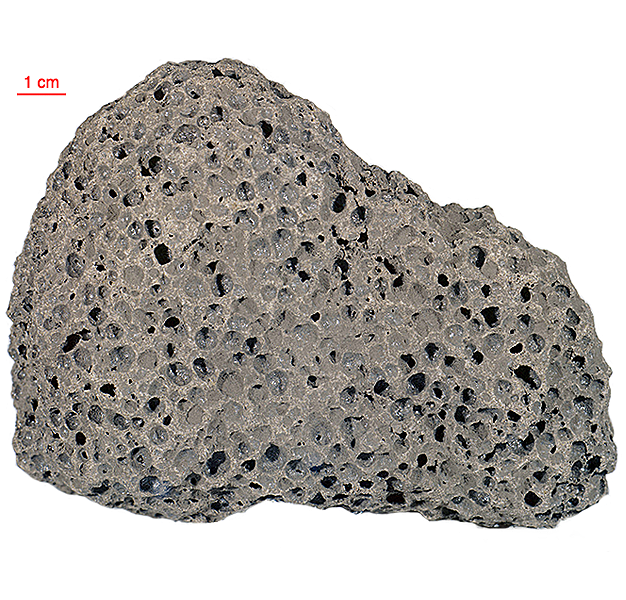
Fact sheet
15016 is a medium-grained basalt with subhedral phenocrysts of zoned pyroxene (1-2 mm) and olivine (~1 mm) set in a matrix of sub-ophitic intergrowths of pyroxene and plagioclase. Vesicles (1 to 5 mm) make up about 50 % of the volume. Opaque minerals (ilmenite and ulvöspinel) frequently border the vesicles. Plagioclase platelets are sometimes hollow, with pyroxene cores. Subrounded grains of Cr-spinel are found in the pyroxene and olivine phenocrysts. Troilite and metallic iron are found in the groundmass. Rotation 1 shows a small cristobalite crystal (centre).
The sample weighed 923.7 grams before analysis and has been dated at 3.38±0.08 billion years (Ar/Ar).
Further details of this and other Apollo samples are here: http://curator.jsc.nasa.gov/lunar/
The Apollo 15 landing site was in the Apennine Highlands, and close to Hadley Rille — a long, narrow winding valley. Approximately 76 kg of lunar material, including soil, rock, core-tube and deep-core samples, were returned to Earth.
This mission was the first flight of the Lunar Roving Vehicle which allowed the astronauts to venture further from the Lunar Module than in previous missions. During three periods of extravehicular activity, or EVA, on July 31st, and August 1st and 2nd, Scott and Irwin completed a record 18 hours, 37 minutes of exploration, travelling 17.5 miles, in the first car that humans had ever driven on the Moon.
Apollo 15 was launched on 26 July 1971.






